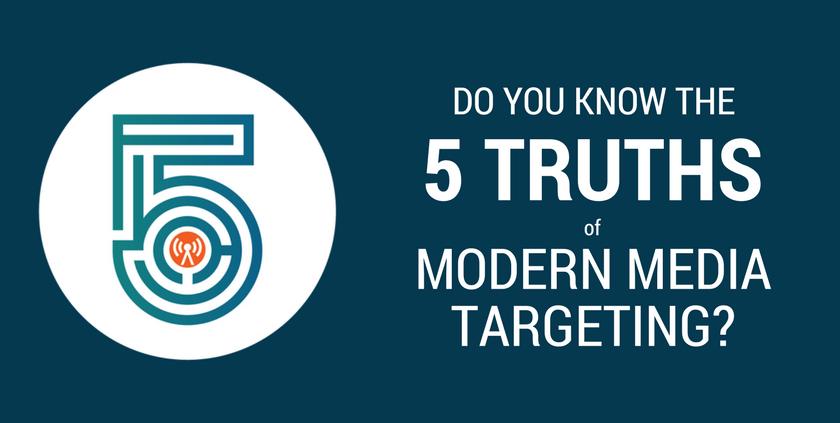Do You Know the 5 Truths of Modern Media Targeting?
The World Wide Web of influencers is growing wider every day, and unfortunately, this is causing the web to get a little tangled. 75 percent of communicators say they’re struggling to identify the right influencers, while 80 percent of influencers complain about receiving irrelevant pitches.
The growing sphere of influencers should be an opportunity, not a frustration. Cision’s new white paper, “The 5 Truths of Modern Media Targeting,” outlines current realities facing communicators when it comes to media targeting, while also providing tech-based solutions to identify the right influencers, craft relevant campaigns and drive results. These truths are outlined below — for additional information, check out the white paper here.
- The customer informs the targeting strategy
Communicators sometimes get this backward. Rather than just jumping straight into building a media list, they need to thoroughly research and understand the company’s prospects and customers. Who are they, and what are their interests? How do they consume media? From there, you can build out the influencer strategy, leveraging technology to target the right contacts. Your contact at the Wall Street Journal may look great on your rolodex, but if your B2B customer isn’t reading that reporter’s articles, what is she doing on your media list?
- Google can’t find the best influencers
It may find this blog post, but it cannot tell you which influencers or outlets your brand’s audience will trust (sorry Google). Plus, your influencer list is constantly evolving, and should be maintained and monitored in real time. Communicators need access to a detailed database that is updated daily in order to have accurate, relevant insight into their sphere of influence.
- A high volume of outreach might not be effective
Communicators are under pressure to show results, but many unfortunately address this pressure with a “batch and blast” approach. This is actually exacerbating the issue — reporters are drowning in emails and report feeling like they get too many irrelevant emails. With proper targeting, the PR industry can improve its perception and better tell its customers’ stories. Utilize tech solutions — such as Cision’s Google Analytics integration — to determine which influencers and publications are driving the best results, and focus your efforts on them. Quality outreach over quantity.
- Use target data to tailor the brand message
Of course, identifying the proper influencers is just half the battle. The next step is getting them to buy in. Communicators must personalize each individual message — based on insights about that influencer — in order to increase the likelihood that he or she will want to work with you. Armed with detailed information about an influencer’s pitching preferences, follower demographics, topics of interest and more, communicators can craft messages that will resonate. And the relationship only evolves from there — keeping notes and tracking interactions with this influencer will lead to a richer, more personal connection.
- Not all media contacts are created equal
Reach and impressions are not your most important metrics. Write that down and tape it to your desk. A high-visibility influencer may have a large audience, but is it the right audience for your brand? Drill down to understand other metrics, such as engagement, to fully gauge influence. Particularly as you get into specific niche topics and audiences, you’ll need a true understanding of the impact of your influencer network.


